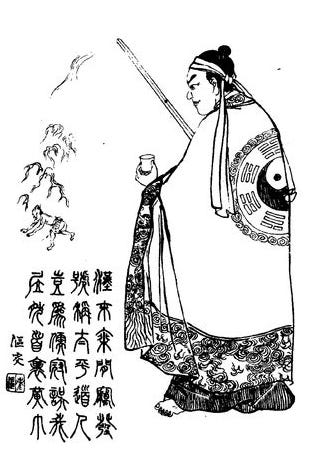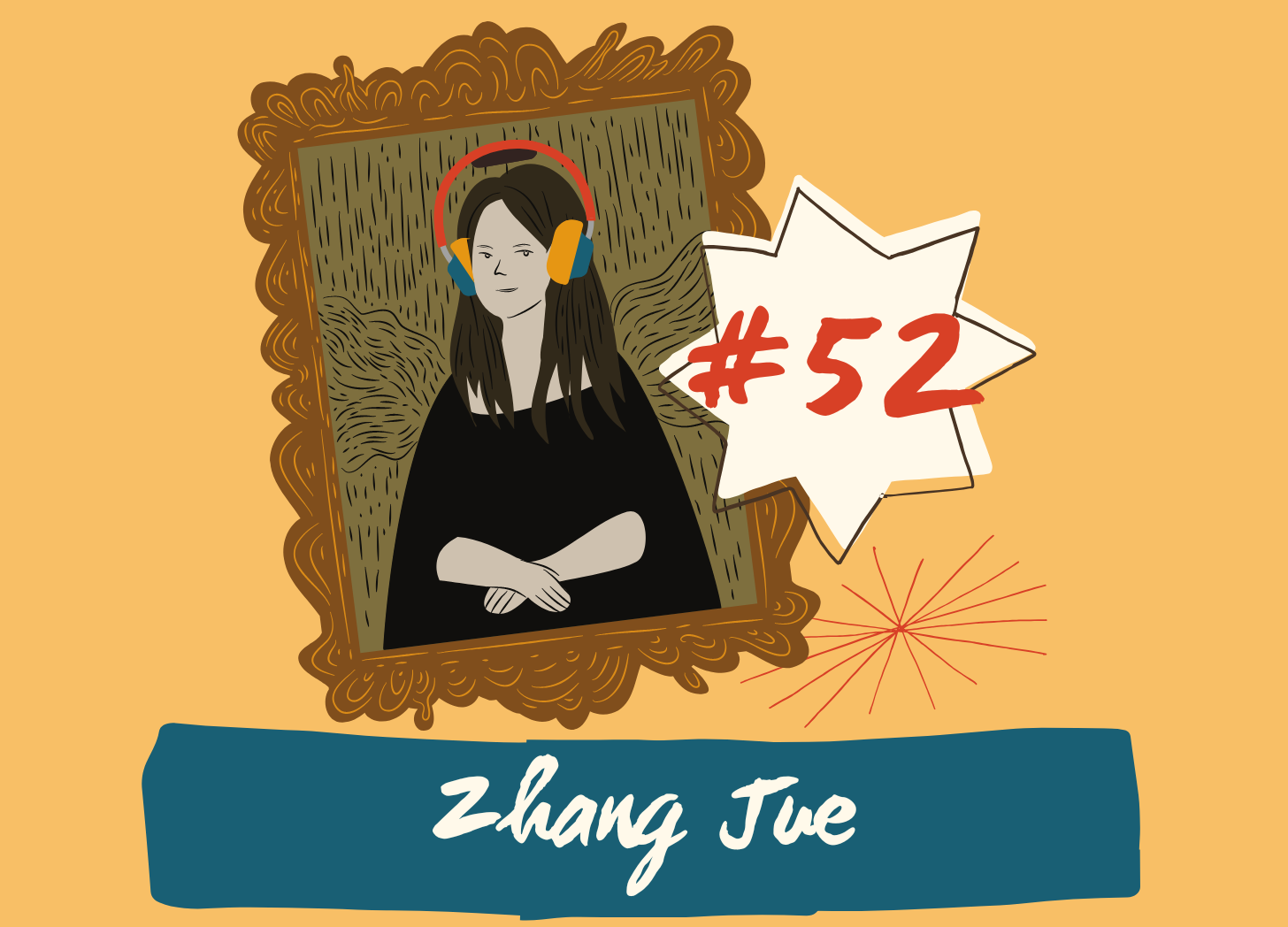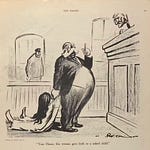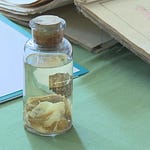Hi everyone,
I’m happy to be back with another episode of Unruly Figures. This time, I’m covering Zhang Jue (sometimes written Zhang Jiao due to some confusion in the pronunciation of an ancient Chinese symbol). He led a rebellion in the second century CE in China, so this is one of the oldest stories I’ve covered yet. I hope you enjoy it!
🎙️ Transcript
Peasants rebelling against the upper classes: It’s a tale as old as time. Class warfare, or at least tension, is one of the most universal events in history—every country goes through this. Land and societal divisions create wealth divisions, greed causes things to spiral out of control, people become unhappy, and society becomes a powder keg. In these instances, it can take one final straw and a small group of people to set things off for the worst. One of the earliest examples of this is a large-scale rebellion in the second century in China, known today as the Yellow Turban Rebellion.
Hey everyone, welcome to Unruly Figures, the podcast that celebrates history’s greatest rule-breakers. I’m your host, Valorie Castellanos Clark, and today I’m covering the tale of Zhang Jue, the leader of the Yellow Turban Rebellion in ancient China
Before we jump into this tale of ancient rebellion, I first have to thank all of the paying subscribers on Substack whose patronage helps me make this podcast possible. If you like this show and want more of it, please become a paying subscriber over on Substack! When you upgrade, you’ll get access to exclusive content, merch, and behind-the-scenes updates. When you’re ready to do that, head over to unrulyfigures.substack.com
All right, let’s hop into it.
We don’t know much about Zhang Jue. He lived in present-day Shandong and was probably born sometime between 140 and 160 CE, though that’s just my estimate. He went on to lead a rebellion in 184, and since rebellion is mostly a young person’s game, mid-forties is really the oldest I think he could have been. He had two younger brothers, Zhang Bao and Zhang Liang.
So really, the story begins well into their adulthood. They were Taoists, and had risen to become leaders in the eastern half of the Taoist Church toward the end of the Han Dynasty. When the rebellion begins, the Han Dynasty had been in power for about 400 years and had come to dominate a large part of modern China. At the time our story begins, the kingdom was ruled by Emperor Ling, who had come to power in about 168 CE.

Zhang Jue was the charismatic, powerful leader of this group. He claimed to have been given a sacred book called the Crucial Keys to the Way of Peace by a diety the Taoists revered, Huang-Lao.1 Initially, he called himself The Great Teacher. Not only was he a popular Taoist leader, but he claimed to be a sorcerer capable of curing illness and injury through faith healing. Patients would write their sins on a slip of paper, which they would then throw in holy water and promise to never commit again. Zhang, and eventually his leading followers, would bless the water, which was then drunk by the patient.2 Patients who were cured spread the word, and Zhang Jue and his brothers became very popular. Eventually, as worship gave way to open rebellion, he promised his followers that “if they took his medicines, they would be immune from wounds and could fight in battle without fear.”3
Zhang could eventually claim the “allegiance of the masses of eight provinces,” which made up a full “two-thirds of the [Han] imperial dominion.”4 Historian Howard S. Levy calculated that over ten years, Zhang Jue racked up nearly 360,000 adherents of his teachings.5 They were managed by being split up into smaller groups, which were led by Grand Adepts and Lesser Adepts.
The healing was instrumental in the rapid growth because eastern China was hit by several plagues in the 173, 179, and 182, possibly as a result of expanded trade on the Silk Road.6 These were exacerbated by flooding in 175 and devastating droughts in 176, 177, 182, and 183. This is what I was talking about in the intro: Once you start to pile problems on top of each other, revolt becomes exponentially more likely. Plague alone might cause unrest or a rise in crime but it doesn’t always spin into outright political rebellion. But plague plus famine or plague plus poverty, or all three combined, can quickly spiral into a revolution. So, of course, when Zhang started preaching rebellion in 183, the peasant class was ready to follow anyone who could promise to alleviate their pain.
It’s worth noting that for a long time, this revolt has been written about as if only the peasants rebelled. But in sort of recent years, I’m talking the 1980s, historians like Chi-yun Chen have brought this into question by examining support for the rebellion by civil servants, local magistrates, court eunuchs, and other people of sort of middling classes. The Emperor’s inner circle probably wasn’t supporting it, but support was more widespread than just the most impoverished people in the country.
Zhang Jue began preaching rebellion because he saw the famines, the plagues, flooding, and droughts all as signs that Emperor Ling had lost the Mandate of Heaven. If you’ve studied royalty at all, this is probably a familiar concept, but the term Mandate of Heaven refers specifically to a Chinese doctrine that an emperor had been chosen by the heavens or the gods to rule. But that trust or mandate could be taken away, which would result in societal collapse of some sort. This is what the brothers were preaching.
The turbulent years leading up to 184 actually confirmed another belief people held at this time: The Sexegenary Cycle. This was a 60-year cycle used to record time, and the return to 1, the beginning of a new cycle, was called a jiazi year, which was sometimes prophesied to be downright apocalyptic in nature.
184 was due to be a jiazi year.
When Zhang Jue began to preach that 184 would be this apocalyptic moment, he drew thousands of people to him from the provinces where he had influence. He created a slogan which spread like wildfire:
The Azure Sky is already dead; the Yellow Sky will soon rise.
When the year is jiǎzǐ, there will be prosperity under Heaven!7
According to Levy, “people blocked the roads in their rush to support [him].”8 Together, the groups began to engage in “trances, fasting, musical performances, chanting, incense burning,” and more.9 From predictions that a jiazi year would include yellow skies that signalled the rise of a new leader, followers began to wear yellow scarves to signify their allegiance to the movement. This all united them, creating a community that transcended traditional regional, ethnic, gender, and class boundaries.
Around the same time, Zhang Jue changed his title—or his followers changed it for him—to General of Heaven. His brother Zhang Liang became General of the People, and his other brother Zhang Bao became General of Earth. In this way, they were firmly put in power of what would become a fighting force.
Word of this movement and the accompanying anti-Emperor preaching spread quickly. Emperor Ling was warned that a man with a significant following and power was potentially coming to usurp the throne.10 It’s unclear to me if that was actually Zhang Jue’s goal—certainly, he believed Ling should not be in charge, but whether he thought he was the natural next successor is less certain; maybe he thought the next natural emperor would be designated by heaven in the course of the rebellion. Regardless, Emperor Ling was unconcerned and did nothing about it.
A date was set by the Zhang brothers: On April 3, 184, they would “stage a coordinated revolt and strike both from within and without the imperial palace.”11 But before that could happen, they were betrayed.
Dates vary, but sometime during the winter of 183 to 184, one of the court eunuchs who was a follower of Zhang Jue was betrayed by a disaffected former follower who had apparently been excluded from leadership of the rebellion and was resentful of it.12 Ma Yüan-i was captured and tortured for information. Once he’d given it up, he was “condemned to a terrible death. He was dismembered by being tied to two carts which were then started in opposite directions.”13 A thousand sympathizers of Zhang Jue in the capital were captured and executed, but some escaped to warn the Zhang brothers that their rebellion had been uncovered.
They were forced to start early, in about March 184. Zhang Jue spread word through his network of leaders, encouraging all “disciples to rise in revolt, and to burn and plunder official residences” connected to the government.14 The response of the disciples was “enthusiastic,” and they caused quite a bit of damage.15 The Emperor sent out imperial forces, but they had the disadvantage of being on the defense. For months, through the summer, the Zhang brothers led military engagements with imperial forces. The brothers would tie their yellow scarves on their heads so their followers could see them; this led to the name Yellow Turban Rebellion, but it’s kind of a misnomer. Lately, there’s been a push to change the name to the Yellow Scarves Rebellion.
Initially, the rebels were fighting well. When imperial forces engaged Zhang Jue’s troops in the summer, they were “forced to retreat before them.”16 But by the end of summer, the tide was turning and the rebels were put down in the following months.
In October 184, Zhang Jue died of an illness while under siege by Huangfu Song in Guangzong County. His “younger brother [Zhang] Liang fought [imperial commander] Huang-fu Sung to a standstill at Kuang-tsung District (in modern Eopei). Huang-fu noted that his adversaries had relaxed their defenses, and ordered an attack at daybreak. In the ensuing battle, Chang Liang was decapitated” along with thousands of rebels.17 When Huang-fu learned that Zhang Jue was already dead, he opened his coffin, decapitated him, and sent his head to the Emperor.18
There was one remaining Zhang brother, Zhang Bao, who was leading rebels near modern-day Hebei. When Huang-fu defeated him, decapitating him like he had the other two, he killed up to 100,000 rebels—or so he claimed. Reports state that he created a mound of their corpses and covered it with grass, creating a hill so high that the kingdom’s capital could be seen from the top of it.19 The “grisly mound was called the Capital Observatory.”20
The rebellion collapsed once its leaders were lost. It had lasted less than a year.
Or, so the Emperor thought. Emperor Ling had retained his throne, but the ideas that Zhang Jue had preached, that Ling no longer had the Mandate of Heaven, continued to spread. There were further small uprisings from people calling themselves followers of Zhang Jue that harassed the government for several years after. It weakened the capital, the Emperor, popular faith in the Emperor, and more. Important government buildings were destroyed, and experienced leaders had been killed in the fighting. At least a hundred thousand rebels died, a significant population loss, which fragmented society. The people who had survived often suffered the loss of their homes and lands because of the way grounds were razed in the battles.
In the end, Zhang Jue didn’t overthrow the emperor. And no one group of his followers can claim that success either. But the rebellion severely weakened the kingdom and it never really recovered. Emperor Ling was stuck outsourcing his power to military commanders, a pattern which fragmented the kingdom even more; his successors after his death in 189 were forced to do the same. Ultimately, the Yellow Turban Rebellion contributed significantly to the fall of the Han Dynasty in 220 CE.
That is the story of Zhang Jue! If you liked this story, you will love my book, Unruly Figures: Twenty Tales of Rebels, Rulebreakers, and Revolutionaries You’ve (Probably) Never Heard Of. There are two tales of Chinese rebels in it. You can let me know your thoughts about this or any other episode on Substack, TikTok and Instagram, where my username is unrulyfigures. If you’d like to get in touch, send me an email at hello@unrulyfigurespodcast.com. If you have a moment, please give this show a five-star review on Spotify or Apple Podcasts–it does help other folks discover the show.
This podcast is researched, written, and produced by me, Valorie Castellanos Clark. Our music is by Danny Wolf of Wolf & Love. If you are into supporting independent research, please share this with at least one person you know. Heck, start a group chat! Tell them they can subscribe wherever they get their podcasts, but for behind-the-scenes content, come over to unrulyfigures.substack.com.
Until next time, stay unruly.
If you liked this episode, you might like one of these episodes:
Episode 6: Tank Man
Thanks for subscribing! Your subscription helps fund my research, as well as food and coffee. Not a subscriber yet? Subscribing gets you ad-free episodes right in your inbox, and it supports independent research and publication. Subscribe here.
Episode 21: Zheng Yi Sao
I am SO EXCITED for y’all to hear this week’s episode on Zheng Yi Sao, China’s famous pirate queen and one of the most successful pirates of all time.
#37: Petra Herrera
Hey everyone, welcome to Unruly Figures, the podcast that celebrates history’s greatest rule-breakers. I’m your host, Valorie Castellanos Clark, and today I’m covering Petra Herrera. She lived during the Mexican Revolution and briefly disguised herself as a man named Pedro to fight for Pancho Villa. This is a sort of special episode for me because I dis…
📚 Bibliography
Bauer, Susan Wise. The History of the Ancient World: From the Earliest Accounts to the Fall of Rome. W. W. Norton & Company, 2007.
Chen, Chi-yun. “Who Were the Yellow Turbans? A Revisionist View.” Cina, no. 21 (1988): 57–68. https://www.jstor.org/stable/40855632
Levy, Howard S. “Yellow Turban Religion and Rebellion at the End of Han.” Journal of the American Oriental Society 76, no. 4 (1956): 214–27. https://doi.org/10.2307/596148.
Michaud, Paul. “The Yellow Turbans.” Monumenta Serica 17 (1958): 47–127.
“Yellow Turban Rebellion.” In Wikipedia, May 7, 2025. https://en.wikipedia.org/w/index.php?title=Yellow_Turban_Rebellion&oldid=1289184845.
“Yellow Turban Rebellion,” in Wikipedia, May 7, 2025, https://en.wikipedia.org/w/index.php?title=Yellow_Turban_Rebellion&oldid=1289184845.
Howard S. Levy, “Yellow Turban Religion and Rebellion at the End of Han,” Journal of the American Oriental Society 76, no. 4 (1956): 214–27, https://doi.org/10.2307/596148.
Susan Wise Bauer, The History of the Ancient World: From the Earliest Accounts to the Fall of Rome (W. W. Norton & Company, 2007).
Levy, 216
Levy, 219
Levy, 219
“Yellow Turban Rebellion”
Levy, 219
“Yellow Turban Rebellion”
Levy, 219
Levy, 219
“Yellow Turban Rebellion”
Levy, 220
Levy, 220
Levy, 220
Levy, 220
Levy, 221
Levy, 221
Levy, 221
Levy, 221















